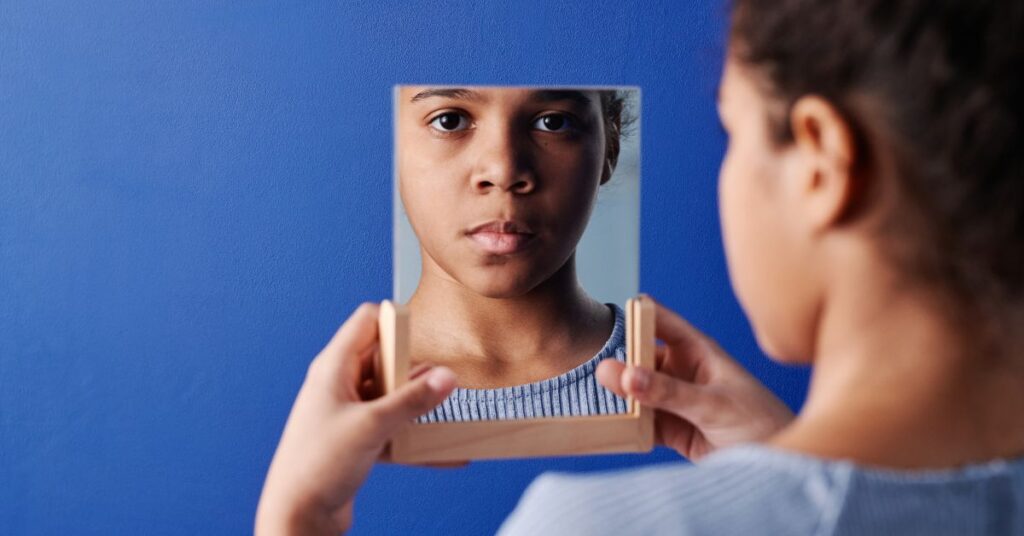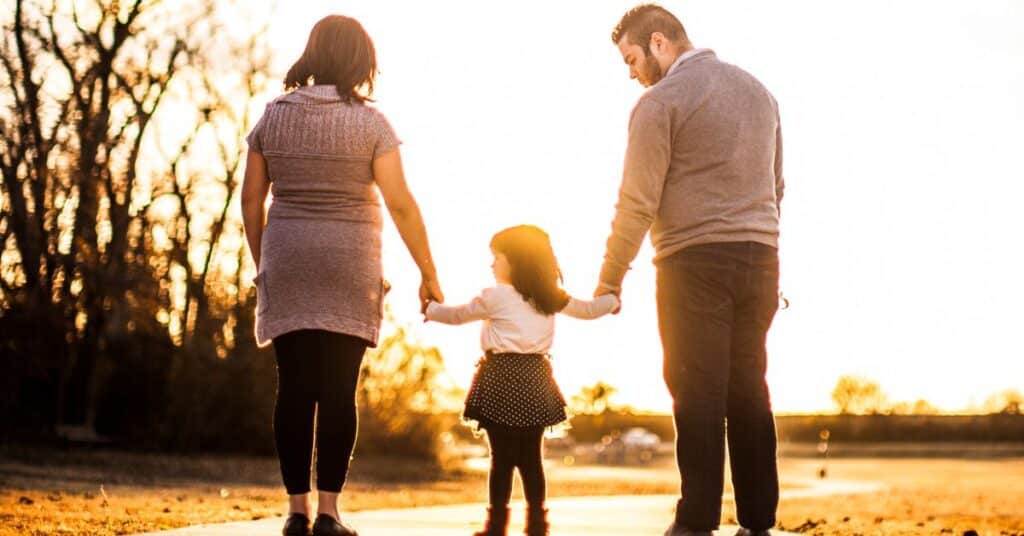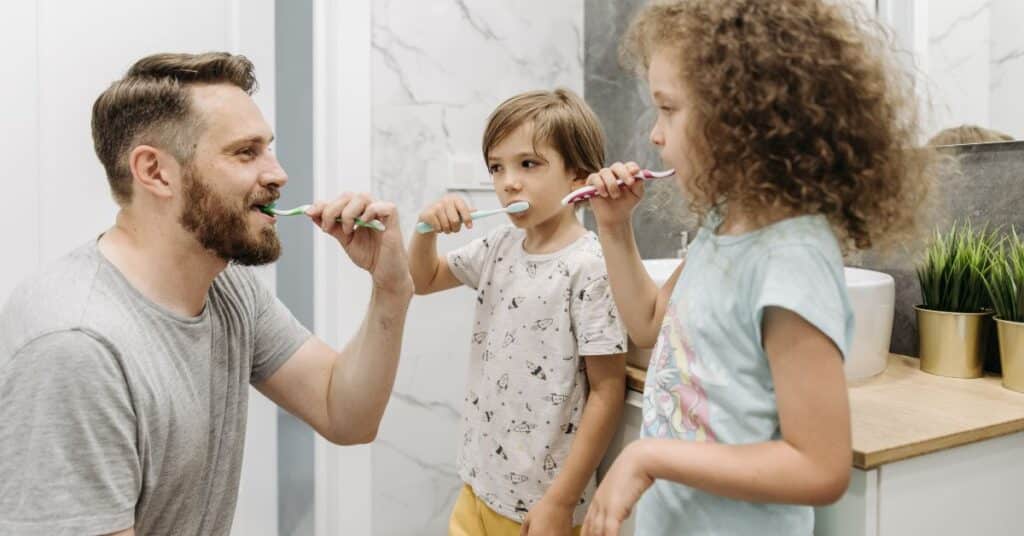Fostering a Healthy Environment and Positive Body Image for Kids
The term “body image” refers to the way in which you think and feel about your body; this can be positive, negative or even neutral. It also includes how you perceive or imagine your body looks. Body-positive thoughts are accepting, respectful and appreciative towards your body’s characteristics and capabilities. A person with a positive body image is more likely to have higher self-esteem including an enhanced sense of their own worth and abilities, as well as increased self-acceptance. They also tend to have a healthier balance of health-promoting behaviors like exercise and eating nutrient-dense foods. This is why it’s so important to model a positive body image for your kids.

A person struggling with a negative body image tends to grapple with feelings of self-consciousness or distress about their physical appearance. This can result in their avoidance of social events due to unease related to their body, ultimately leading to feelings of isolation, loneliness, and even depression. People with negative body images are more likely to engage in compulsive exercising or overexercising and have disordered eating, anxiety and low self-esteem.
If you hear your child talking negatively about their body, try encouraging them to rephrase what they are saying to something positive. For example, if they say, “My thighs are so fat” you can ask them to rephrase to something like, “My thighs get me to where I want to go. I can be grateful for their ability to do that”. With time and practice, a healthier body image will emerge.

Modeling Healthy Behaviors and Body Image for Kids
If you want your children to be healthy individuals, you—as the parents—need to show them how. Parents are the most influential role model a child has in their lives. To be a good role model for your child, you can implement positive personal behaviors around food, exercise, and self-care.
Food
Embracing positive food behaviors involves prioritizing nutrient-rich choices, such as fruits, vegetables, lean proteins, dairy, and whole grains, as your go-to options for the majority of your meals. Equally important is the practice of flexibility and mindfulness when it comes to enjoying other foods, such as indulgent desserts or items high in sugar and salt.
Avoid negative behaviors around food like dieting, or talking about your body dissatisfaction in reference to body image—especially in front of your children since they absorb much of what their parents say. Try to avoid talking about foods as “good” or “bad” as assigning moral value to foods, which can create associations like guilt and shame with eating “bad” foods. These negative associations can trigger disordered eating. If your child is old enough, you can talk with them about the dangers of dieting. Be sure to explain that it can lead to micronutrient deficiencies, constipation, and weight regain.

Children also hear adults talk about fad diets and restricting their caloric intake, and they notice when their parents are “on a diet” or eating different foods than what the rest of the family eats. Instead, encourage your child to listen to their bellies when eating all foods and to stop when they are full to avoid overeating. In addition, sit together for meal times and avoid eating in front of screens as often as possible, as this can lead to mindless eating or eating out of habit rather than intention.
Modeling a positive body image for kids entails refraining from using negative language or making disparaging statements when describing either your own body or the bodies of others. Avoid calling yourself fat, commenting on your own weight or the weight of others, complaining about clothes not fitting or remarking on other people’s appearances. When children hear their parents and other adult figures talk about their own bodies or other people’s bodies in a negative way, that reinforces the message that having a body of a certain shape or size is not okay.
It takes practice, but in general, a good rule of thumb is to not make comments on another person’s appearance at all. Telling someone that they “look great” because you can see they have lost weight, though well-intentioned, is often not taken positively by the recipient. They may feel uncomfortable with others commenting on their weight, be embarrassed or ashamed that they were or are larger bodied than other people, and may not want to be reminded of that. Some folks who have lost weight did so unintentionally. They may have been diagnosed with cancer, a gastrointestinal disease that causes malabsorption or maldigestion, or have difficulty eating due to depression, anxiety, or an eating disorder. It is not a good idea to comment on a person’s weight unless they have invited you to do so by remarking on their own body first in a way that is conversational.

Oftentimes, in adolescence, weight loss is achieved in an unhealthy way through restricting calories. Well-meaning but uninformed adults, including health care providers, who congratulate them on weight loss are reinforcing that their disordered eating behaviors are, in fact, beneficial, further contributing to continued restrictive dieting and the potential long-term medical consequences of restricting energy intake.
Physical Activity
To model positive physical activity, try exercising together as a family by engaging in enjoyable movement. Examples may include going for a walk, jog, bike ride or playing a sport together, like tennis. Get your child involved by talking about what sports they like to play or how they enjoy physical activity. See if they want to join a new sports team or try a new form of physical activity. To avoid negativity surrounding exercise, never use exercise as a form of punishment or force them to do it in order to lose weight. Instead, encourage your child to work out for the right reasons that promote positive body image. “I work out to feel good,” “I work out to feel strong,” or “I work out to release stress” are examples of body-neutral statements by parents that can be beneficial when internalized by children.

In addition, encourage your children and family to spend less time in front of screens, which can motivate us towards achieving the Physical Activity Guidelines for Americans standards. For children aged 3-5 years old, this involves remaining active throughout the day, engaging in both structured and unstructured play. For children 6-17 years old, the recommendation is to aim for 60 minutes of moderate to vigorous intensity physical activity per day, including aerobic, muscle-strengthening, and bone-strengthening activities.
Self-Care
When it comes to self-care, it is important to recognize that there are three categories, each of which are connected to an individual’s feelings towards their body, be it positive or negative. These categories are mental health, spiritual well-being, and physical self-care.
For mental and emotional self-care, consider teaching your children:
- a variety of coping strategies to deal with challenging situations
- the importance of rest
- the ability to say “no” if they feel like they’re being mistreated
- how to practice these behaviors in a non-judgemental environment.
Some coping strategies for children include emotional regulation exercises, which will depend on the age of your child. For preschoolers and elementary aged children, you could teach breathing techniques that engage the parasympathetic (rest and digest) nervous system when they’re feeling overwhelmed, anxious or stressed. One way to do this is to get a pinwheel or tell them to imagine birthday candles in front of them, breathing in through the nose and then having them blow out through the mouth. Additionally, providing your child with a stress ball when they’re angry can help de-escalate their emotions by offering a safe outlet. In addition, you could carve out some time in your evening routine for a few minutes of discussion between you and your child about what they are grateful for. This can easily be incorporated at dinner around the table, where you can involve the whole family.
For middle schoolers and teenagers, you can teach them the “leave it at the door” exercise. Every time they enter a new room they have the opportunity to reframe their mindset to a positive one. This can help them leave the past behind and focus on the present moment. An individual who is capable of regulating their emotions in a healthy manner is one that is less likely to engage in negative self-talk and poor body image thoughts.

Physical self-care includes brushing teeth and hair, taking a shower or a bath, exercising, and eating well among other habits. The age of the child will impact which of these tasks can be done unsupervised, but in all cases, routine is key for establishing commitment and modeling how one takes care of their body. When children are young, parents are responsible for bathing them and brushing their hair and teeth. Parents also provide an environment for exercising and eating well. As the child gets older, they are able to implement these daily tasks to best practice effective hygiene and physical self-care. It is during these times we can rely on routine and modeling of the behaviors to encourage the child to continue with the health-promoting behaviors as they grow.
Finally, spiritual self-care depends on the family’s religious and spiritual beliefs and should be built into the family dynamic as the parents see fit. If you are religious, you could try setting aside time each morning or evening as a family to pray or read together. Many families are not religious, and may not follow a specific spiritual practice. Consider what values your family finds important or sacred and spend time discussing those ideas together.
Social Media’s Impact on Body Image for Kids
Survey data indicates that ninety percent of teenagers use social media. Further, research suggests that more time spent on social media can lead to comparing oneself with peers, which can result in a distorted and negative body image.

A body-positive atmosphere extends beyond the physical surroundings of your children. In today’s digital landscape, it is crucial to also take into account the influence of social media on body image, particularly on young people. Survey data indicates that ninety percent of teenagers use social media. Further, research suggests that more time spent on social media can lead to comparing oneself with peers, which can result in a distorted and negative body image. If you’re helping to foster a more positive body image for your kid, it’s imperative to consider their experience with social media. This will look different for every family, but it is worth sitting down together, having a discussion, and mapping out boundaries.
The Takeaway
Setting a healthy environment and modeling body image for your kids is essential to a child’s development. It encompasses mental, emotional, and physical health which can help to prevent disordered eating behaviors and low self-esteem. No one is perfect at all of these, but we can certainly build consistent routines for ourselves and them, to better support a body positive environment for our children to grow and learn.
If your family or your child are struggling with the diet aspect of positive body image for kids, please reach out. We specialize in family nutrition and children’s eating disorders.

Resources:
- “Body Image – Tips for Parents.” Body Image – Tips for Parents – Better Health Channel, www.betterhealth.vic.gov.au/health/healthyliving/body-image-tips-for-parents.
- “Physical Activity Recommendations for Different Age Groups.” Centers for Disease Control and Prevention, Centers for Disease Control and Prevention, 7 July 2021, www.cdc.gov/physicalactivity/basics/age-chart.html.
- “Self-Care for Kids by Age: Everything You Need to Know.” ChildSavers, 26 May 2021, childsavers.org/self-care-for-kids-by-age/.
- Aacap. (n.d.). Social Media and teens. American Academy of Child & Adolescent Psychiatry. https://www.aacap.org/AACAP/Families_and_Youth/Facts_for_Families/FFF-Guide/Social-Media-and-Teens-100.aspx
- Jiotsa, Barbara et al. “Social Media Use and Body Image Disorders: Association between Frequency of Comparing One’s Own Physical Appearance to That of People Being Followed on Social Media and Body Dissatisfaction and Drive for Thinness.” International journal of environmental research and public health vol. 18,6 2880. 11 Mar. 2021, doi:10.3390/ijerph18062880


